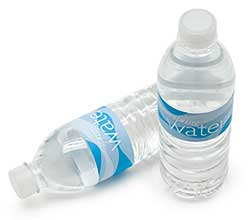3 Design drivers
All designed objects or design projects have a reason behind them. Very often the reasons may seem quite obvious: to serve a function, to meet some specific need, or to be useful in some way. For most designs there is more than one reason, and some designs can have quite complex sets of motivations and drivers.
For example, there are a whole range of reasons for creating a plastic water bottle like the one in Figure 10 – as well as the obvious, functional reason of storing water. These reasons will have come from different sources, and will also vary depending on when in the design project the reason came about.

Activity 3 Function and purpose
Pick an object near to you and list some reasons for it being designed the way it is. If you can’t think of an object, then use the example of a plastic water bottle given in Figure 10.
Try thinking about: what the design does; how it does something; who benefits from it (and how/why).
Discussion
Your answer will depend on what object you chose. Check that you came up with reasons that considered: what the design does; how it does something; who benefits from it (and how/why), and so on.
The following reasons are for the example of the water bottle:
- to contain water
- to drink water from easily and quickly
- to be a good size and shape to be held in a hand
- to work immediately and without breaking, spilling or leaking
- to be a cheap solution for the person using it
- to be a cheap product to manufacture for the company
- to have sufficient strength and structural integrity to resist loads due to stacking while on display, in storage and during transportation
- to be readily compacted for ease of recycling.
From this activity you will probably have come up with a list of statements that were specific to the product you were considering. If you were to repeat the activity for a range of different products, you would come up with more reasons. But you would also start to see common patterns of reasons, and these reasons would be indicators of what people want and need from products. These are known as design drivers.
